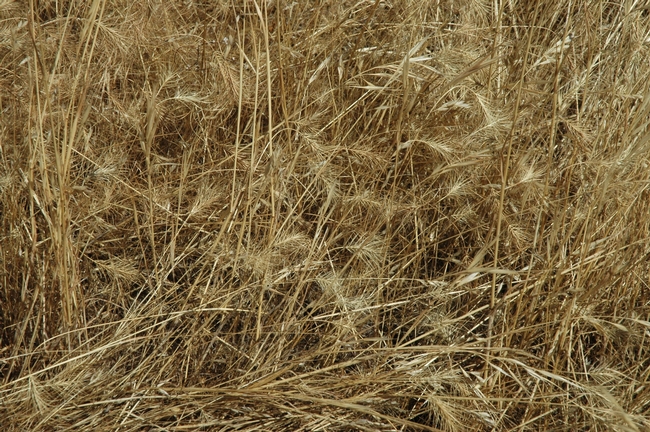Reposted (with permission) from the UC ANR blog Invasive Plants in Southern California
Link to original post (December 6, 2013): Medusahead in San Diego County written by Carl Bell
Medusahead [Elymus (Taeniatherum) caput-medusae] is a relatively new but serious invasive grass in San Diego County. So far it is only known from infestations in the Santa Ysabel, west Julian and Palomar Mountain areas. The first San Diego Natural History Museum herbarium specimen of medusahead was collected two mileseast of the Santa Ysabel junction in 2004 (http://sdplantatlas.org/SynScanLarge.aspx?N=154694). The photo below was taken near Julian by Gil DelRosario this summer.
A mapping and prioritizing project for invasive plants in San Diego County has been developed with funding from SANDAG (San Diego Area Governments). This project included medusahead and showed it existing in small infestations in these areas. However, I mapped it this summer in a 160 acre area on a public preserve and know of infestations on two pasture areas (one 4 acres the other 9 acres) on private property near the junction of highways 79 and 76. So I’m sure there is a lot more of it around the north county area than previously thought.
What’s the big deal; another non-native Mediterranean grass?
There’s a reason it’s named for a mythical monster. (Actually, not really, the name refers to the twisting awns in the inflorescence.) Medusahead is different, especially for livestock producers. The plant has a higher than normal silica content in the stems and leaves. Because of this, the plant is hard for animals to digest and unpalatable, so they avoid eating it. Additionally the dead foliage creates a dense thatch that does not decompose readily. Medusahead seedlings are able to germinate through this thatch, but other grasses are not. Combine that with the reluctance of livestock to graze existing plants and it doesn’t take long before the whole area is medusahead.
The situation is scary, but not dire (yet). Medusahead does not produce long-lived seed. A consistent and thorough control program can eliminate or greatly reduce this weed problem. There is lots of good information on this weed from colleagues and other sources in northern CA; see the UC Weed Science Blog
(http://ucanr.edu/blogs/ucdweedscience/index.cfm) and write in medusahead in the search box.
For now, it would be helpful if everyone keeps their eyes open for this weed.
By the way, Katy Perry, What were you thinking?

